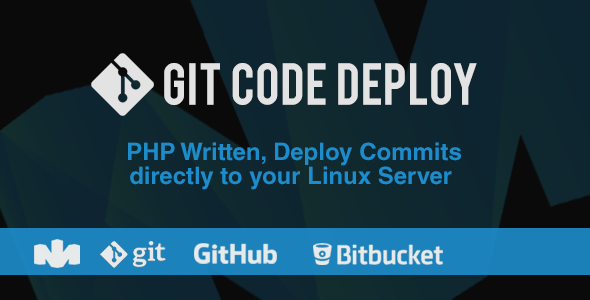
The Easy GIT Code Deploy script provides a streamlined solution for automatically updating live server code whenever developers push changes to their Git repository. This PHP-based tool eliminates manual deployment processes by creating a direct pipeline from version control systems like GitHub or Bitbucket to production environments.
How the Automated Deployment Script Works
This lightweight PHP script acts as a webhook receiver that triggers whenever code changes are pushed to your repository. The deployment process follows three simple stages:
- Development: Developers work locally and commit changes
- Repository: Code gets pushed to GitHub/Bitbucket
- Live Server: The script automatically pulls updates to production
Unlike many commercial deployment tools, this solution requires no monthly subscriptions and works seamlessly with both GitHub and Bitbucket repositories. The script supports all standard Git clients including:
- Command line Git (Bash/SSH)
- Git for Windows
- TortoiseGit
- SourceTree
- Any other Git-compatible client
Key Features and Benefits
Cross-Platform Git Support
The script accepts webhook triggers from any Git platform, making it ideal for teams using different development environments. Whether your team prefers command-line tools or graphical interfaces, the deployment process remains consistent.
Simple Implementation
Setting up requires just three steps:
- Place the PHP script in your server’s web-accessible directory
- Configure repository webhooks to point to the script URL
- Set up folder permissions and deployment paths
Comprehensive Documentation
The package includes detailed setup guides and a folder helper utility to simplify configuration. Even developers with minimal PHP experience can implement the solution quickly.
Technical Requirements
To use this deployment solution, your environment needs:
- Server: Linux-based operating system (CentOS, Ubuntu, etc.)
- PHP: Version 5.6 or higher
- Git: Installed on the server
- Permissions: Proper folder access rights for the web user
Implementation Best Practices
Security Considerations
When setting up automated deployments, consider these security measures:
- Use secret tokens in your webhook configuration
- Restrict script access through .htaccess rules
- Implement IP whitelisting if possible
- Run deployments under a limited-permission user account
Testing Workflow
For optimal results, establish a deployment workflow:
- Create a staging environment that mirrors production
- Test deployment scripts in staging first
- Implement branch-based deployment (master → production, develop → staging)
- Set up email notifications for deployment events
Troubleshooting Common Issues
If you encounter problems during setup, check these common solutions:
- Permission errors: Verify the web user has proper access to both the script and target directories
- Webhook failures: Check server error logs and repository webhook delivery attempts
- Git conflicts: Ensure your production directory is a clean Git working copy
- PHP errors: Confirm your server meets the PHP version requirements
This deployment solution bridges the gap between development and production environments, eliminating manual steps while maintaining control over the release process. By automating routine deployments, teams can focus on building features rather than managing infrastructure.


